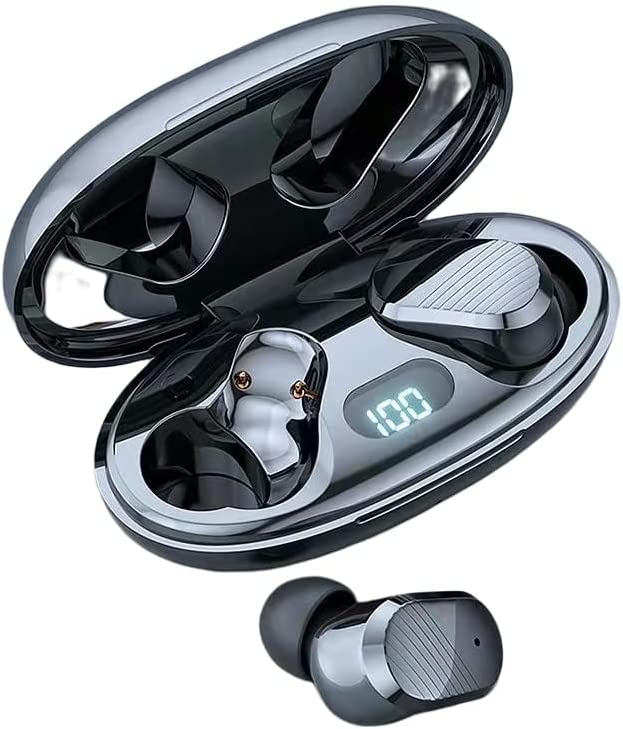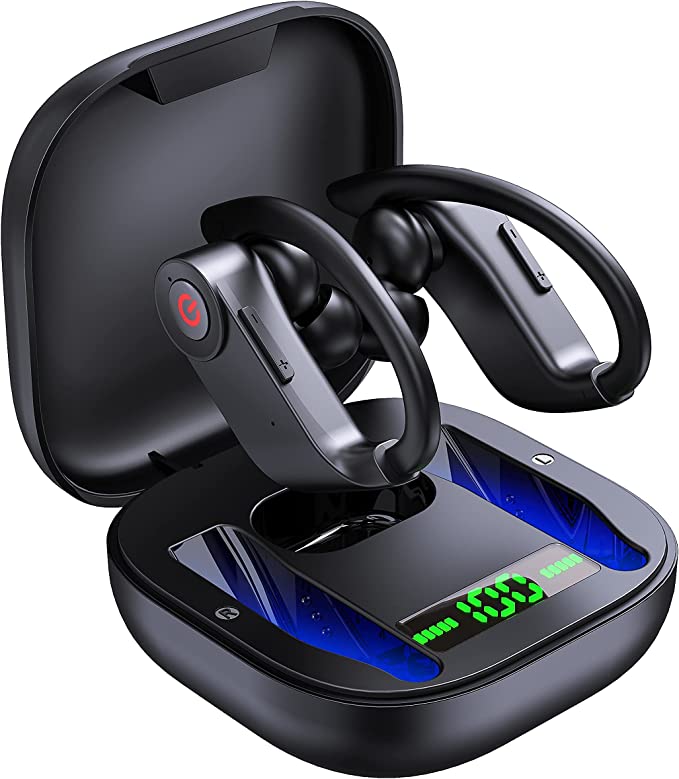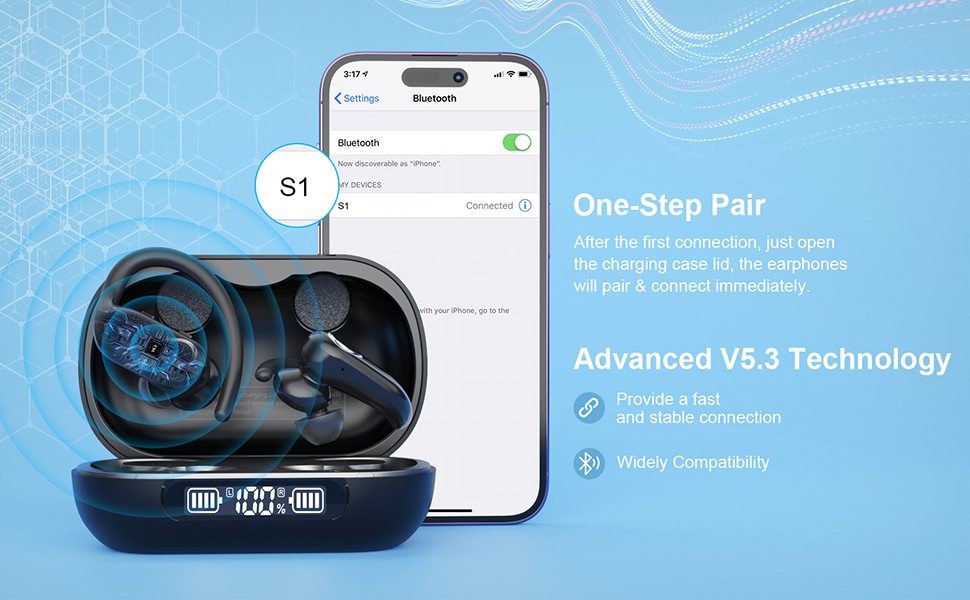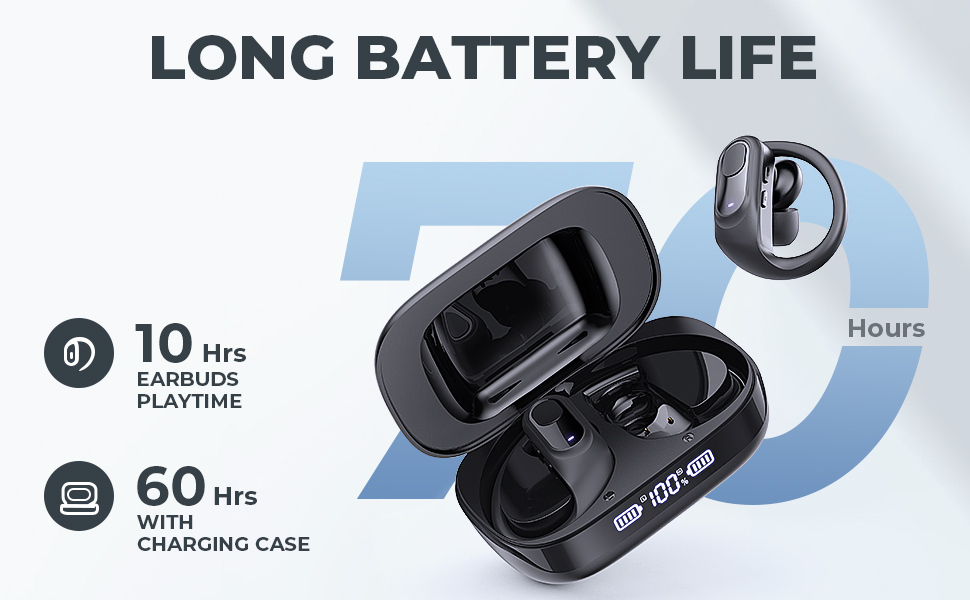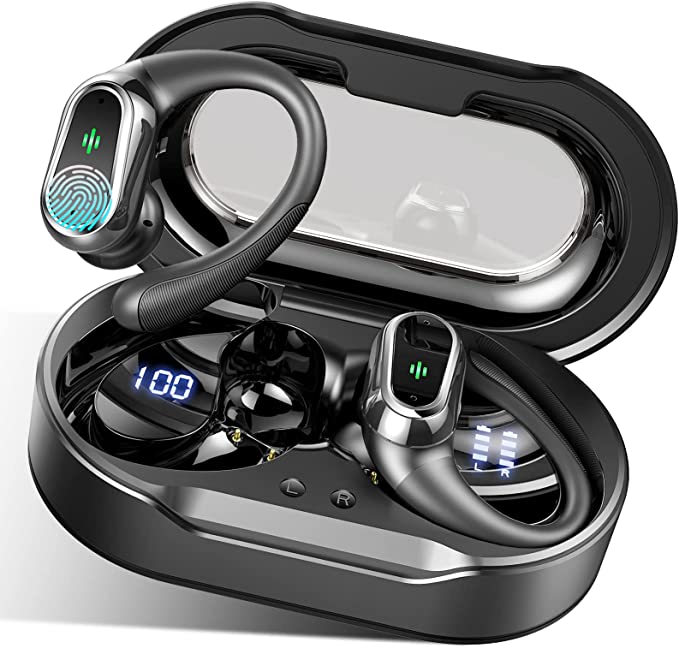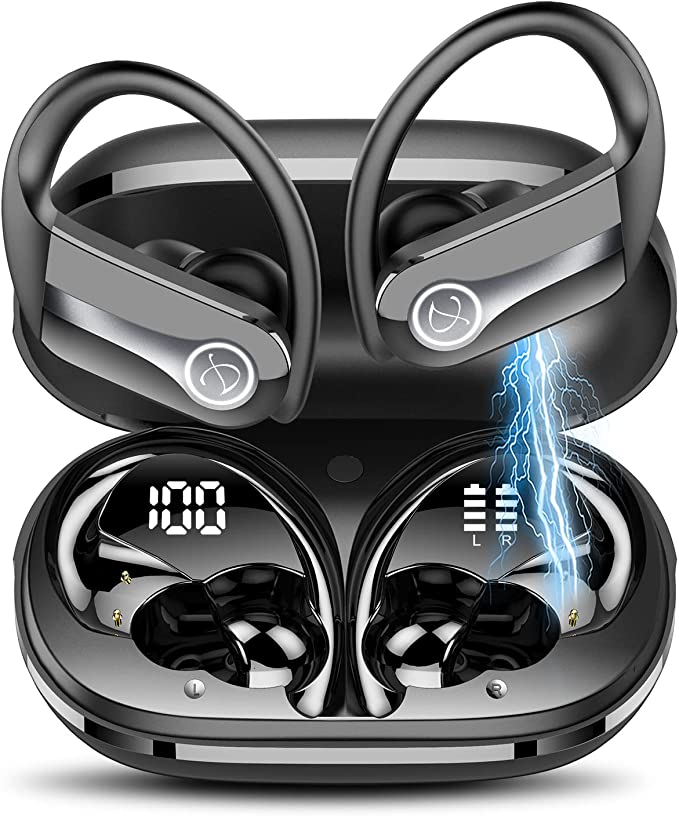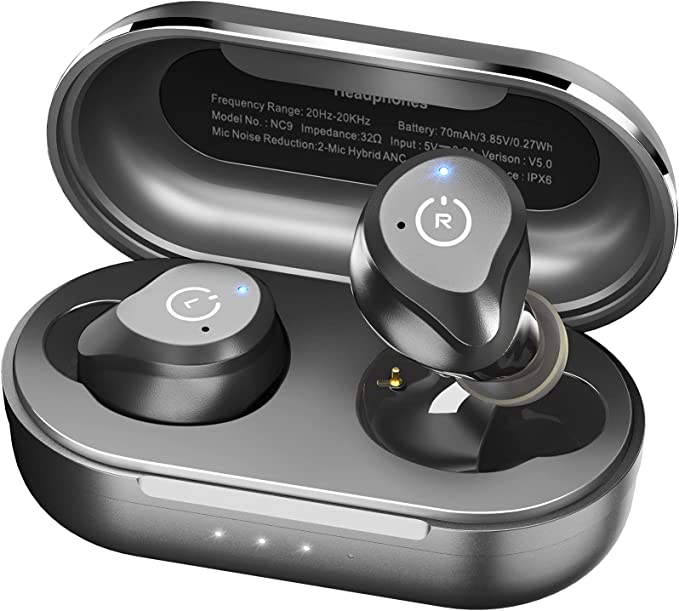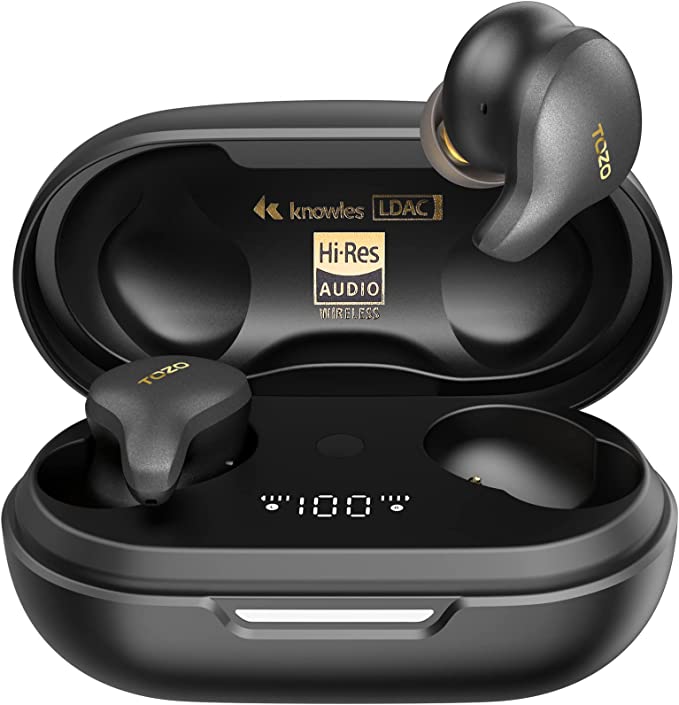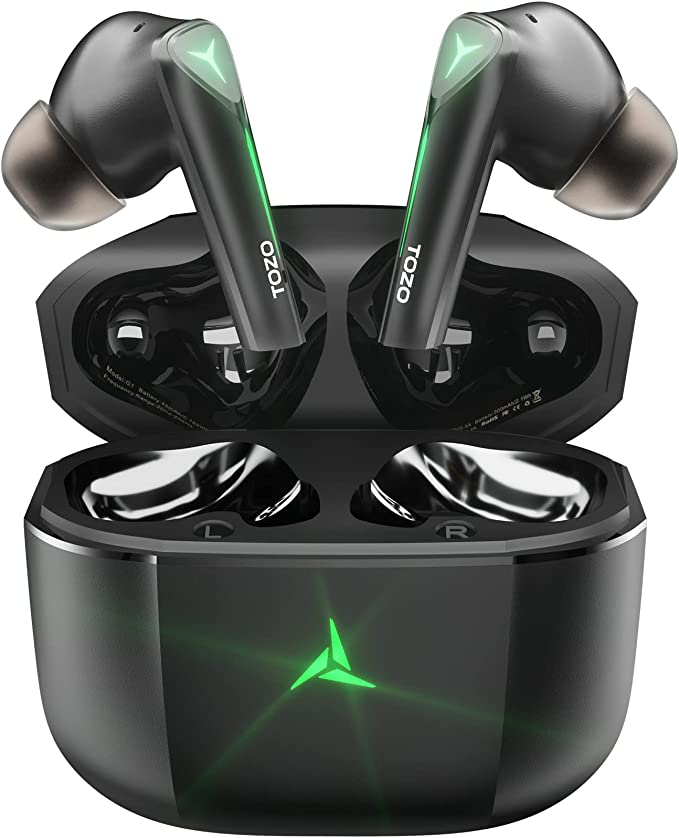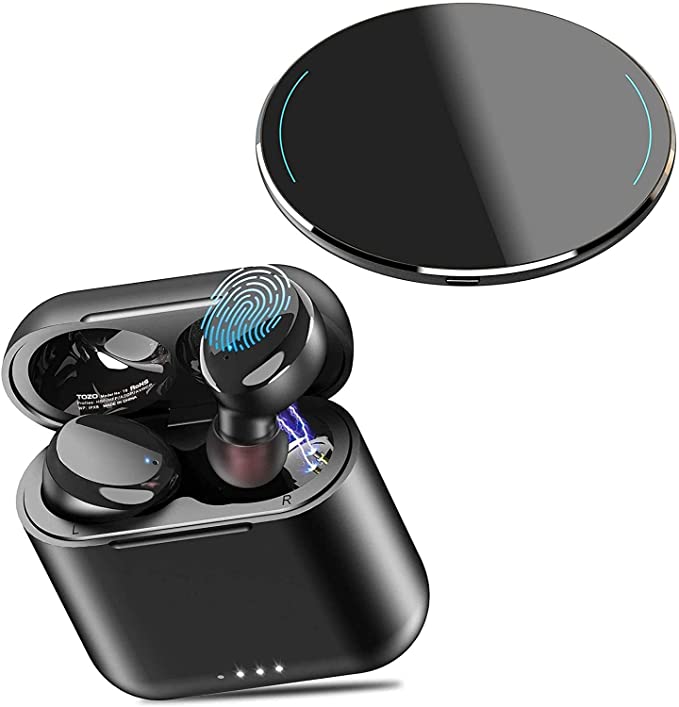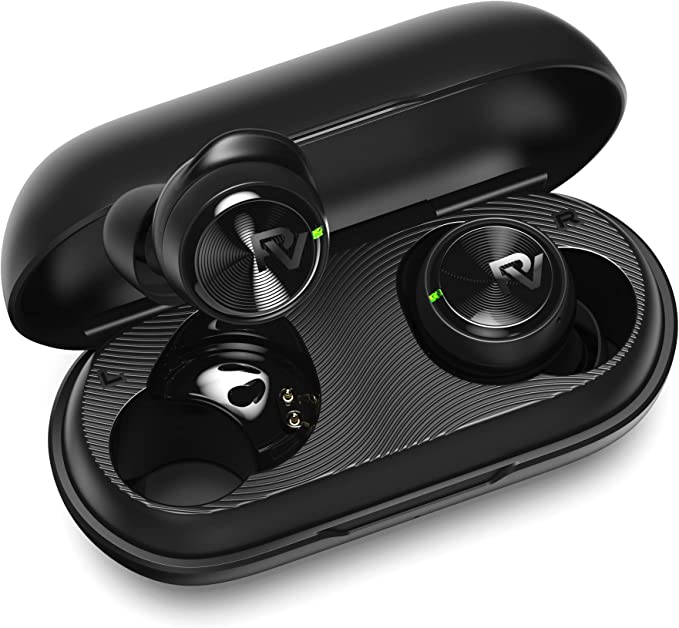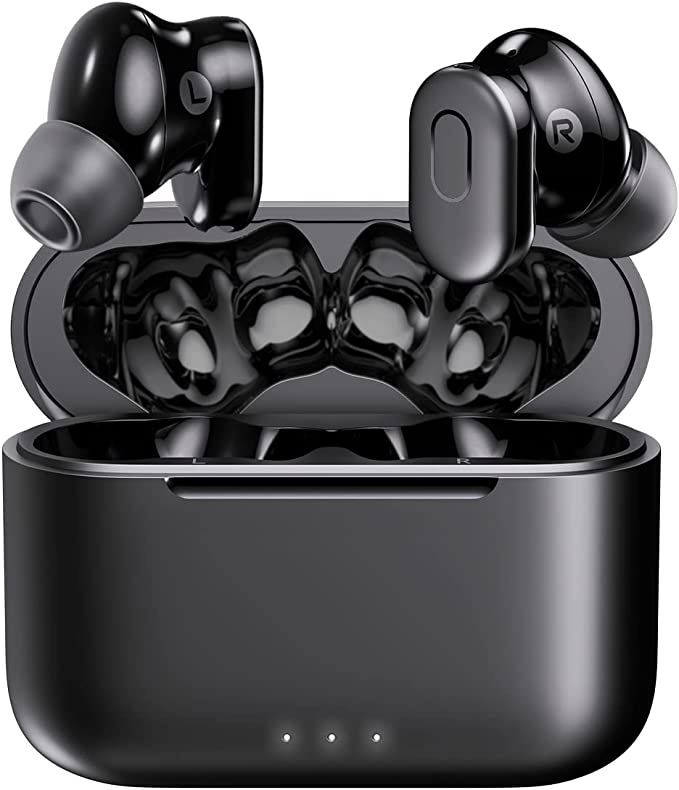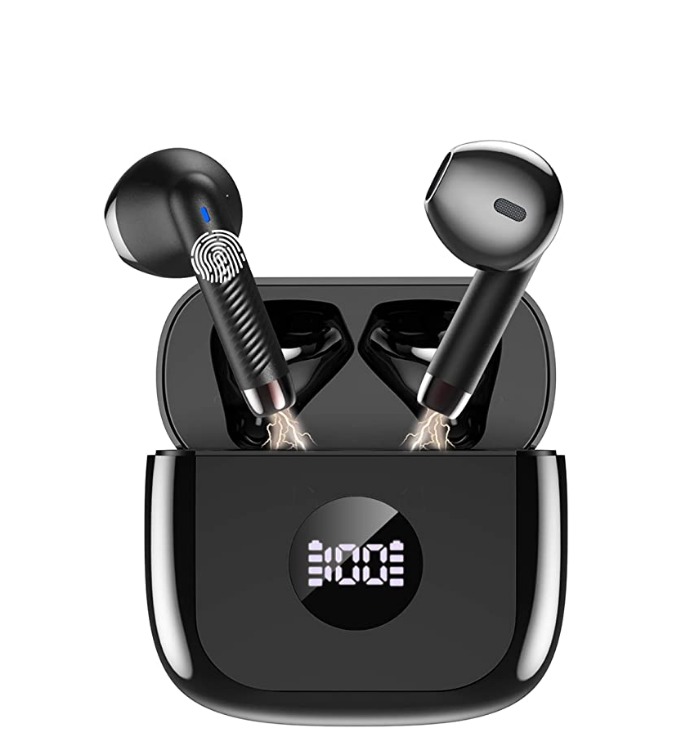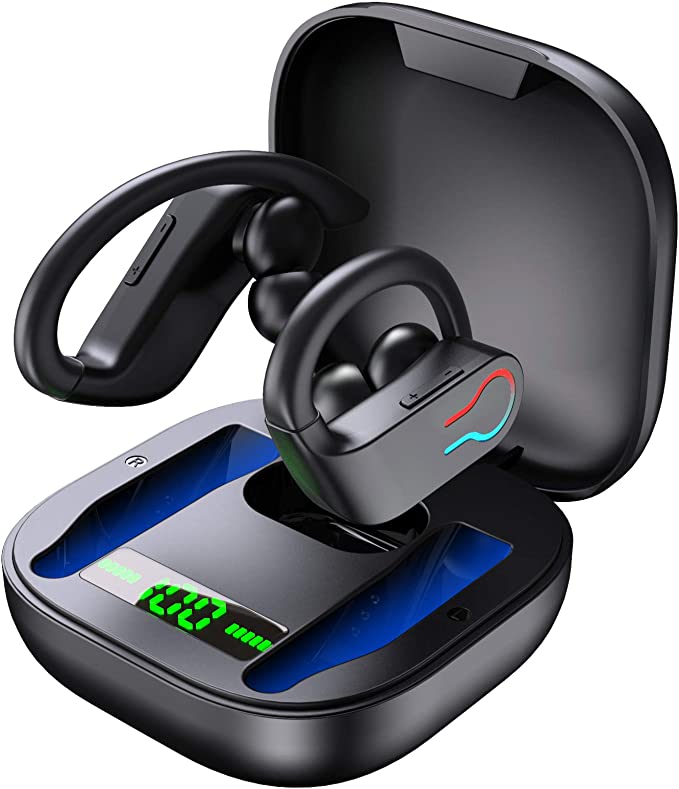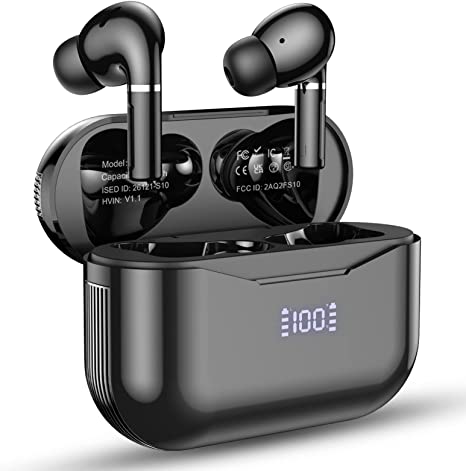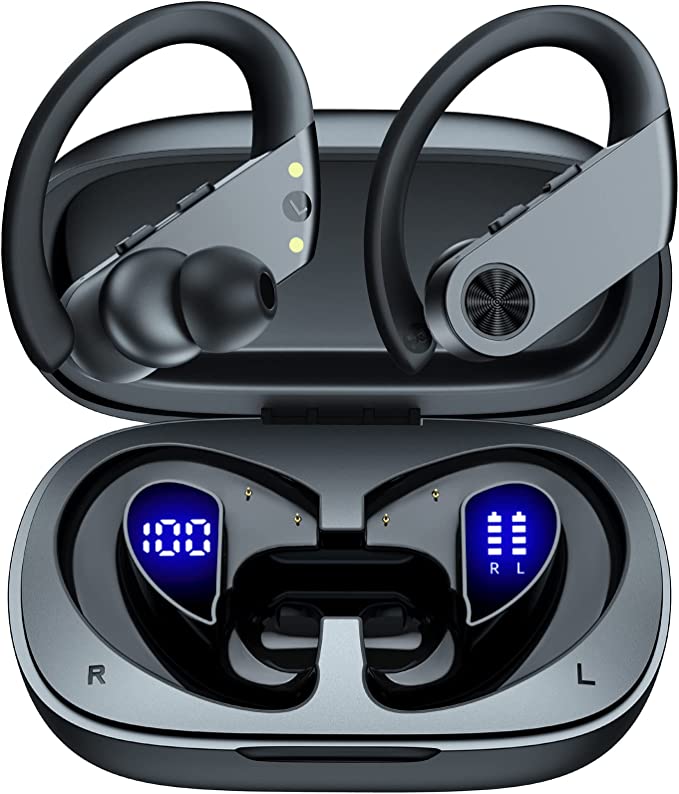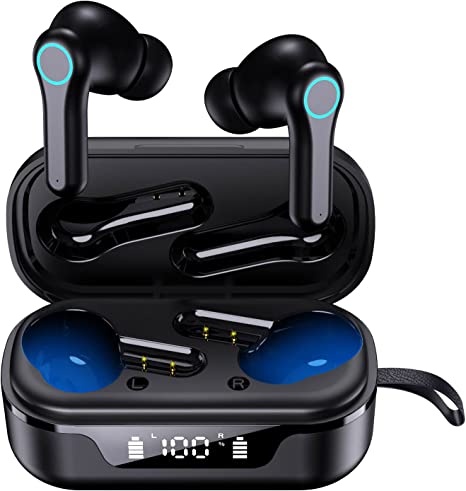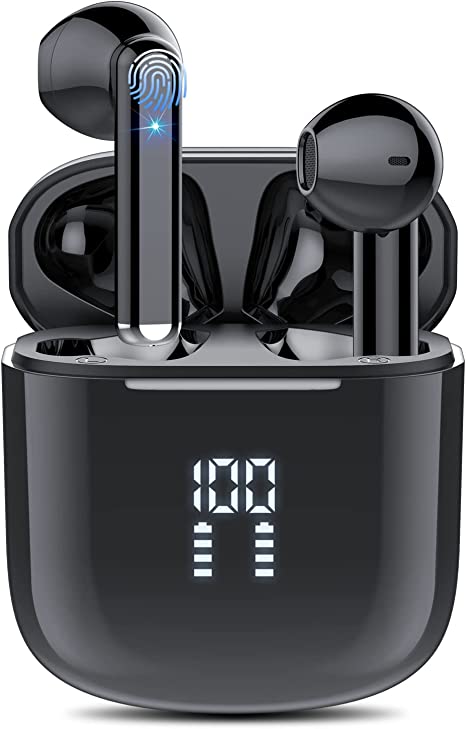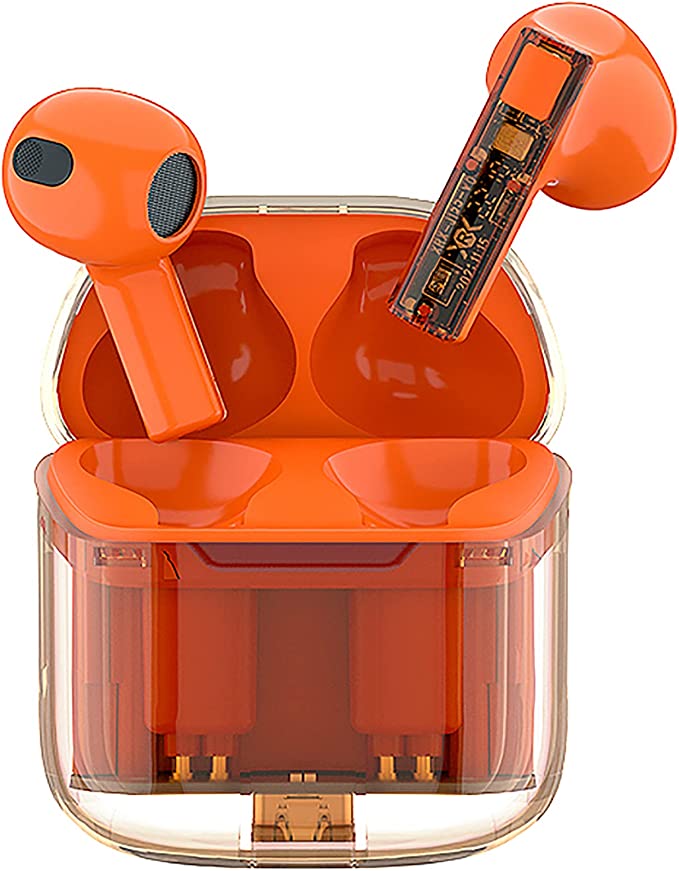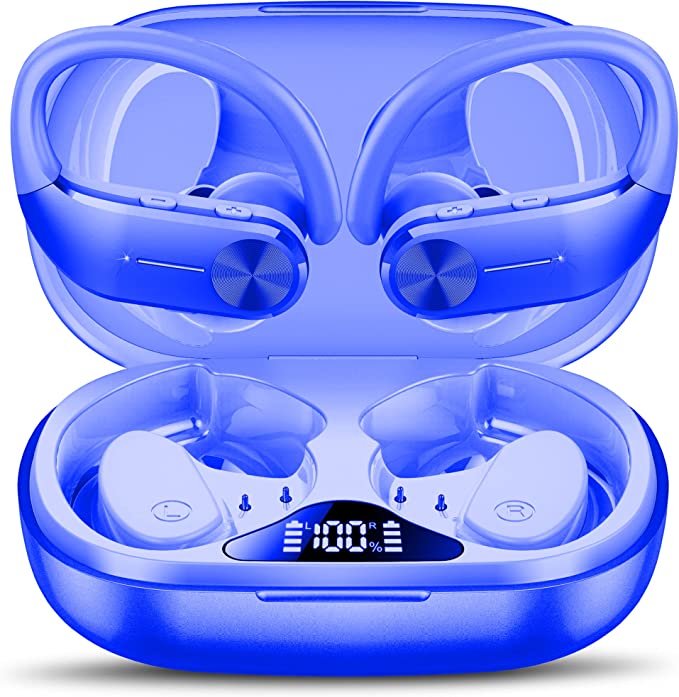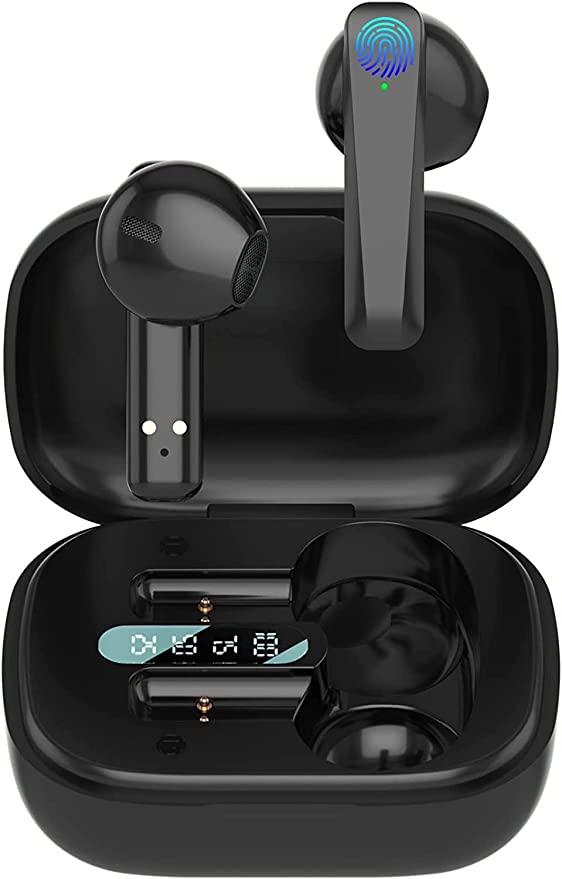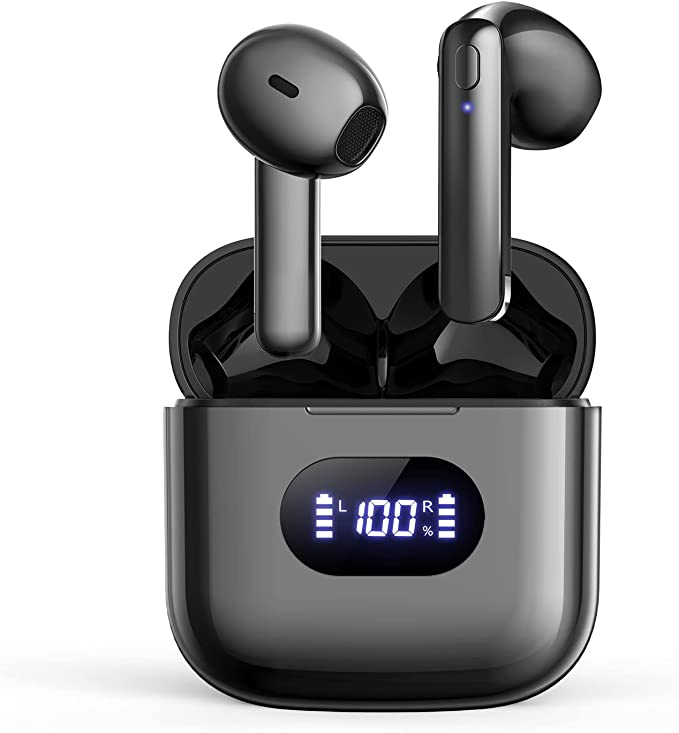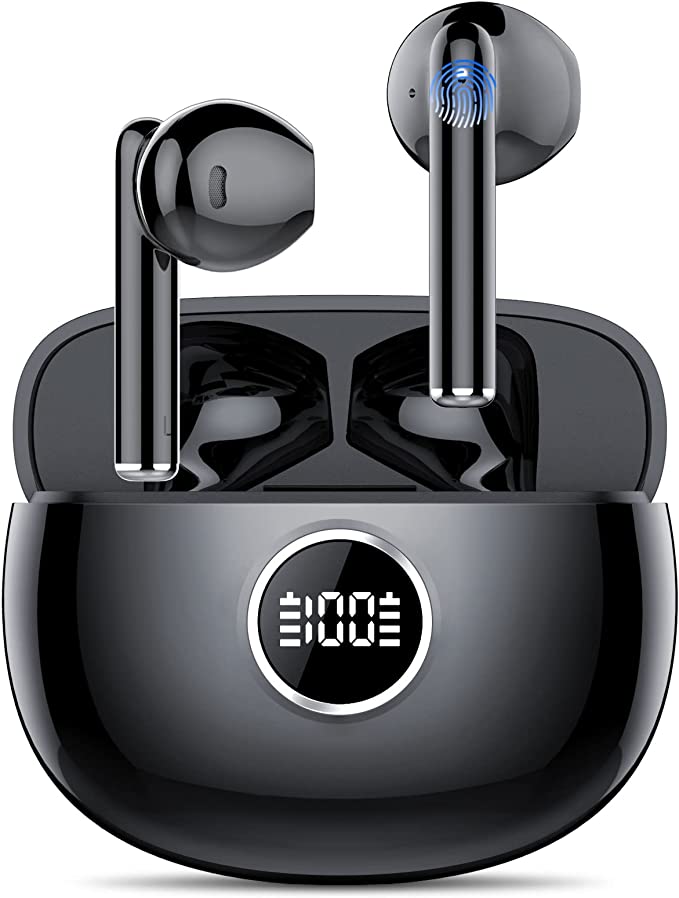EUQQ Q23 Wireless Earbuds: Budget-Friendly Bluetooth Earbuds with Impressive Battery Life
Update on June 29, 2025, 5:54 a.m.
Imagine you’re an audio engineer. You’re handed a design brief: create a pair of true wireless earbuds for a marathon runner. They need to be durable, reliable, and last for hours. Then comes the final constraint, the one that changes everything: the target retail price is $22.99. This is no longer a simple design job; it’s a masterclass in compromise, a tightrope walk of value engineering. Every single component, every feature, must justify its existence.
This is the lens through which we should examine a product like the EUQQ Q23 Wireless Earbuds. Instead of just reviewing it, let’s deconstruct it. Let’s reverse-engineer the decisions made to solve the fundamental problems of an athlete, all while racing against an unforgiving budget.

The Gravity Problem: Engineering an Anchor for Your Ears
The first and most immediate challenge for any sports earbud is a battle against physics. Every footfall, every turn of the head, is an attempt by gravity and momentum to dislodge the device. A standard earbud, relying solely on friction within the ear canal, is often a losing proposition.
The engineering solution here is immediately visible: the Ear Hook Design. This isn’t just a piece of flexible plastic; it’s a simple, elegant application of lever mechanics. The main body of the earbud acts as the load, while the ear canal provides a pivot point. The hook, looping over the top of your ear (the pinna), acts as a counter-lever. It creates a second, secure point of contact that distributes the earbud’s weight and actively counteracts the downward and outward forces of motion. It becomes a physical anchor.
Does it work? According to one customer, their husband, who has a “heavy lifting delivery job,” finds they don’t fall out amidst constant bending and lifting. This is a real-world validation of the design principle. However, engineering is about trade-offs. This specialized, secure fit comes at a cost. The shape that provides stability for one person might feel “awkward,” as user “Kathryn carruth” reported, for another. In the quest for a universal solution on a budget, stability was clearly prioritized over universal comfort—a classic engineering compromise.

The Corrosion Equation: Defeating an Athlete’s Hidden Enemy
Once the earbuds are secure, they face their next foe: the elements. This isn’t just about surviving a rain shower. An athlete’s sweat is a far more insidious adversary—it’s a warm, saline solution, making it significantly more corrosive than fresh water.
The specification sheet proudly lists an “IP 7 waterproof” rating. More accurately, this refers to the IPX7 standard, as defined by the International Electrotechnical Commission (IEC). Let’s decode this. The ‘IP’ stands for Ingress Protection. The ‘X’ means the device hasn’t been rated for protection against solid particles like dust. The ‘7’ is the crucial number: it certifies that the device can survive being fully submerged in up to one meter of fresh water for 30 minutes.
This isn’t just for show. Achieving this requires meticulous sealing of every seam, port, and button. It’s the difference between a device that’s merely “splash-proof” and one that can genuinely withstand the prolonged chemical assault of a sweaty, hour-long run. User “Marcia H” pushed this to the limit, claiming she “even went swimming with them.” While this is beyond the intended use, it speaks to the robustness of the seal. The trade-off? Sealing a device so thoroughly can sometimes impact microphone clarity or trap heat, and any imperfection in the manufacturing process can lead to failure. For $23, executing this level of protection consistently is a manufacturing challenge in itself.

The Endurance Marathon: The Mothership and its Drones
A runner’s endurance is measured in miles; their earbud’s is measured in hours. An 8-hour playtime from the earbuds themselves is respectable, but for multi-day training or long commutes, it’s not enough. The modern solution is the portable charging case, an ecosystem we can think of as a mothership and its drones.
The earbuds are the drones, sent out on 8-hour missions. The case is the mothership, a portable power bank holding an additional 42 hours of charge. This system is enabled by the use of Lithium Polymer batteries. Unlike the rigid, cylindrical lithium-ion cells you might find in a flashlight, Li-Po batteries can be made in thin, flat pouches. This flexibility allows engineers to cram the maximum possible energy capacity into the compact, sculpted shapes of both the earbuds and the case.
The result is a staggering 50 hours of total playtime. As one user happily reported, “I’ve gotten 3 days playing time before I had to recharge.” This liberates the user from daily “leash anxiety”—the need to constantly be near a power outlet. The compromise here is physical. To hold such a large battery, the case has a certain size and weight. And as user “BDH” presciently noted, the cost constraints of a $23 product can surface in mechanical components: the “hinge on the case seems very weak.” The electrical engineering might be solid, but the mechanical engineering is where the budget often shows.

The Unseen Tether: Forging a Stable Connection from Thin Air
With the physical challenges addressed, we turn to the invisible one: the wireless connection. The earbuds claim Bluetooth 5.3, the unseen tether to your phone. Bluetooth works using a technique called frequency-hopping spread spectrum—it’s like having a conversation in a crowded room by rapidly jumping between 79 different channels, a clever way to dodge interference from Wi-Fi, microwaves, and other devices.
Each version of Bluetooth refines this process. Version 5.3 brings improvements in connection stability, efficiency, and latency, making for a more robust link with fewer dropouts. This is the technology that powers the simple “One Step Pairing” and provides a reliable stream of music during a run. The trade-off is subtle. The performance of this unseen tether is a partnership. While the earbuds have the 5.3 hardware, their full potential depends on the phone they’re paired with and the quality of their internal antenna. Furthermore, to save on licensing fees and processing power, a budget device will almost certainly use the universal SBC audio codec, rather than higher-fidelity options like AAC or aptX. The connection is stable, but a sliver of audio quality is left on the table.

The Balancing Act of Sound and Silence
Finally, with the budget all but spent, how do you make the earbuds actually sound good? This is where the last set of intelligent compromises comes into play.
First, for sound production, the engineers opted for large 10mm speaker drivers. Think of a driver like a drum skin; a larger surface can move more air, which is particularly effective at producing lower frequencies. This choice leans into a sound profile with punchy bass, which is often desirable for workout music as it can power through the thud of your own heartbeat and footsteps.
Second, for silence, the design bypasses expensive Active Noise Cancellation (ANC). Instead, it relies on two things. For your listening experience, it uses passive noise isolation—the physical seal of the silicone tip in your ear. For your phone calls, it employs CVC 8.0 (Clear Voice Capture). It’s crucial to understand this distinction. CVC is not for you; it’s for the person you’re calling. It’s a clever set of algorithms that uses the microphones to identify your voice and digitally filter out background noise, so you come through clearly.
The user feedback suggests this balancing act works. Sound quality is rated a very respectable 4.6 out of 5, and call quality is described as “pretty good.” The trade-off is clear: you won’t get the immersive, cone-of-silence effect of high-end ANC earbuds, but you get a perfectly functional audio experience and clear calls, which for $23, is a remarkable feat. One user, “AH,” did report their left earbud shorting and losing volume, a stark reminder that at this price point, quality control can be a variable, and individual component failure is a higher risk.
The Engineer’s Verdict: More Than the Sum of its Parts
In the final analysis, the EUQQ Q23—or Power Q25 Pro, as it’s sometimes called in user reviews—is not a beacon of groundbreaking technology. It is, however, a monument to thoughtful value engineering. It is a physical manifestation of a hundred well-reasoned compromises.
It tells a story of prioritizing stability over universal comfort, choosing robust waterproofing over other niceties, and favoring massive battery life even if it means a less-than-premium hinge. It intelligently uses a large driver for satisfying bass and a clever algorithm for clear calls, forgoing expensive ANC.
For the price of a few cups of coffee, you are not just buying a piece of hardware. You are buying a collection of smart decisions, a solution to a complex engineering problem. And understanding this—understanding the why behind the what—makes you not just a more informed consumer, but also an admirer of the silent, unseen engineering that powers our everyday lives.


